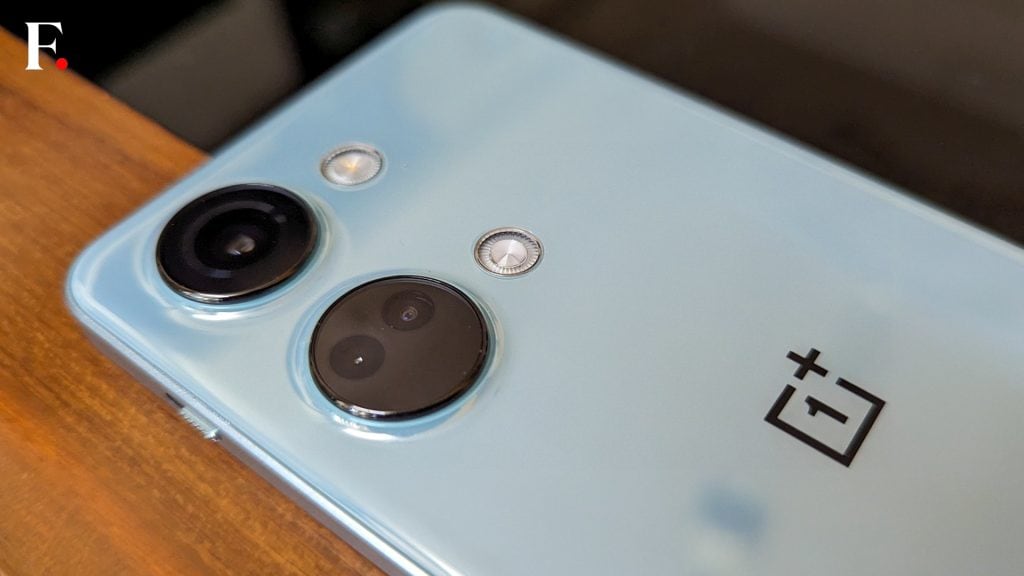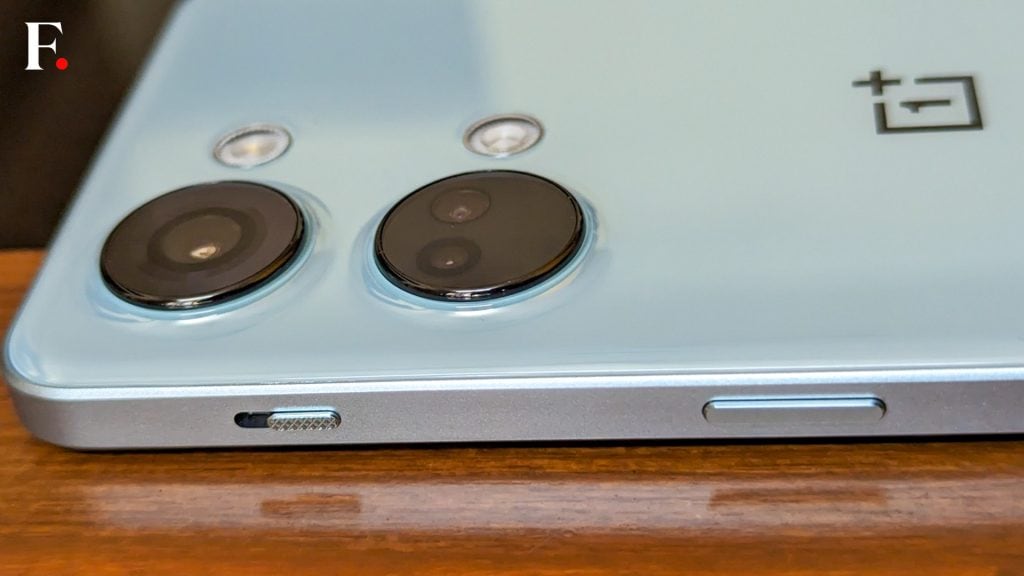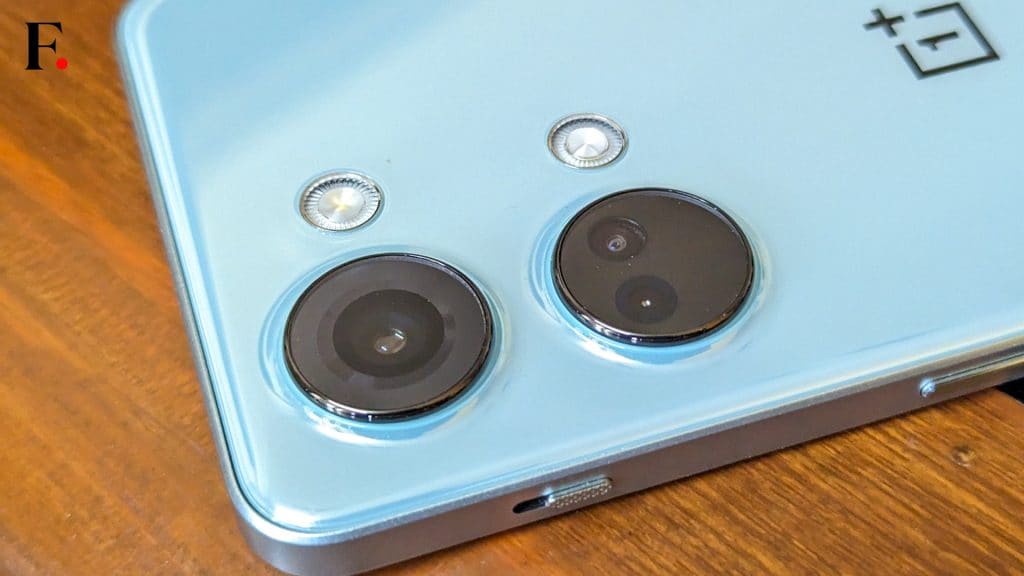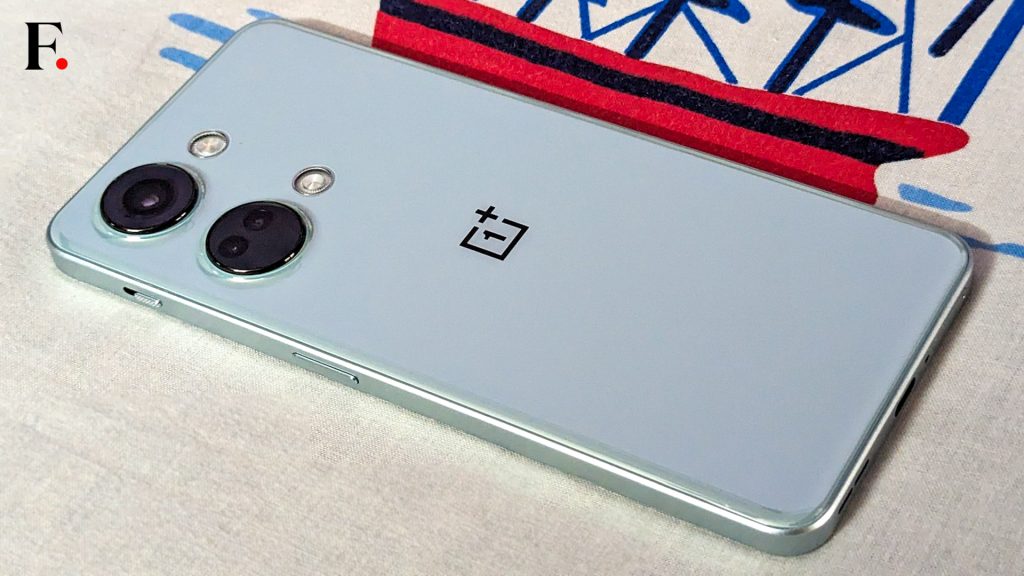Pros:
– Good build quality and finish
– IP54-rated dust and splash resistance
– Powerful processing hardware
– Impressive 10-bit Fluid AMOLED display
– Competent main and ultra-wide cameras
– Good battery backup, 80W fast charging
– Android 13 with three more major updates in the future
Cons:
– Significant performance throttling under load
– Poor macro camera
– Placement of fingerprint scanner
– Price has jumped closer to OnePlus R series phones
Price: Rs 33,999 onwards
Rating: 3.8/5
The Nord flagships, if I may call them that, have been pretty solid devices offering excellent value for money. I am talking about Nord phones without extra suffixes like CE and Lite. They have had competent hardware and cameras at a price tag starting under Rs 30,000. The Nord 3 5G looks to change the game courtesy of near flagship-grade processing hardware and display but oversteps the 30K price point. Is it worth the extra money? Let’s find out in this long-term review.

OnePlus Nord 3 5G: Design (3.5/5)
Typically, the top-of-the-line Nord phones used to have a slightly different design as compared to the scaled-down CE and CE Lite variants. But all phones in the Nord 3 series seem to speak the exact design language, and are hard to distinguish from one another at a quick glance. The Nord 3 5G design, though not distinct, isn’t bad at all, especially the new Misty Green colour. It frankly looks more blue than green to my eyes, but it’s pleasant nonetheless.
The build quality is a notch higher than its siblings, and it uses a glass back with Corning Gorilla Glass 5 protection. While the back is scratch-resistant, there seems to be no oleophobic coating, and it does attract smudge marks. The frame is constructed out of good-quality plastic with a smooth matte finish that complements the glossy back. There are no rough edges on the phone and it feels great in hand with good weight distribution. The phone feels lighter and slimmer than what one expects from 194 grams and 8.15 mm respectively.

One major improvement in aesthetics here is the thin bottom bezel. Generally, budget and midrange phones have a thickish bottom bezel, but the one here is as slim as those on the other three sides of the screen, which is great. A volume rocker is located along the left edge of the phone, while the power button and alert slider can be found on the right side. The bottom edge of the phone has a SIM tray, a speaker and a USB-C charging port. The other speaker is located behind the earpiece at the top of the screen.
You get an in-display fingerprint scanner here which is quite responsive. I have lauded OnePlus in the past for the ergonomic placement of the scanner (an inch and a half above the bottom edge) but not here. For some reason, they have moved it halfway down, and you need to stretch your thumb a bit to reach it. The placement of the volume rocker and power button are fine. You do not get a microSD card slot or a 3.5 mm headphone jack here.

OnePlus Nord 3 5G: Display (4.25/5)
The display on the Nord 3 is one of its best features. The Nord 3 5G has a 6.74-inch Fluid AMOLED screen with a higher than Full HD resolution of 2772 x 1240 pixels. The resolution is similar to what you get on the OnePlus 11R screen, but you get a flat display here instead of curved one; no complaints about that. And yes, it supports 120Hz variable refresh rate, ranging between 40 Hz to 120 Hz depending on the content being displayed.

That’s not all, the Nord 3 display is HDR10+ compliant and supports 10-bit colour (over a billion colour shades). The display is protected by a layer of Asahi Dragontrail Glass. The sharpness and colour reproduction are excellent. There aren’t too many screen calibration options but the ones that are available are good enough. You get to choose between Vivid, Natural, Cinematic and Brilliant colour profiles, and you have a manual colour temperature adjustment slider, which is handy.
I liked Cinematic the best in terms of colour accuracy, followed by Vivid with an assist from the colour temperature slider pushed a little towards the warmer side. The other two profiles are worth a try too if you like your colours a bit on the softer side (Natural) or a little extra vibrant (Brilliant). Again, you will need a bit of extra warmth from the colour slider if you choose the latter.
OnePlus Nord 3 5G: Hardware and performance (3.75/5)
This is one area where things have changed drastically for the new top-of-the-line Nord phone. Typically, OnePlus has been using competent but distinctly midrange SoCs in the Nord, Nord 2 and Nord 2T. The company has jumped to a Mediatek Dimensity 9000 chip in the Nord 3 which is almost flagship grade. In terms of RAM and storage, you get two options – 8 GB LPDDR5X RAM with 128 GB UFS 3.1 storage, and the second with double the RAM and storage. There is no memory card slot to expand it further.

The performance of the phone is very good in most departments. Things are buttery smooth in day-to-day tasks like using social media apps, photography, browsing, watching videos or switching between multiple apps. It can handle most of the recent games quite well at fairly high settings. The phone doesn’t feel too hot after 30 minutes of gaming but the performance throttles when the phone temperature stays around the mid-40s for some time.
As illustrated by the 3D Mark Wild Life Stress Test charts below, the performance can drop as much as 40% under sustained heavy loads. We have been using the phone for a couple of months for this long-term review, and it received a few software updates during that period, but this issue is yet to be addressed fully. This issue will not impact normal usage, but when playing graphics-intensive games, there will be a noticeable drop in frame rates as the phone gets hotter.
The Mediatek Dimensity 9000 and the Mali-G710 MC10 GPU scored well in most synthetic benchmarks. Continuing with 3D Mark, it scored 7375 and 2336 in Wild Life and Wild Life Extreme benchmarks respectively, with an average frame rate of 44.2 and 14 fps. The PCMark Work 3.0 benchmark, returned a score of 11,287, and the numbers in Geekbench 6 were pegged at 1096 and 3417 for single-core and multi-core respectively.

These demonstrate a huge jump from the Nord 2T numbers in similar benchmarks and are closer to Qualcomm’s Snapdragon 8 Gen 1 territory, which is great for a midrange phone. The performance of the phone was pretty good in other areas too. The speakers produce a loud and punchy sound output with a decent stereo effect. The call quality and reception were fine during testing on this 5G-ready phone. Wireless connectivity options include Bluetooth 5.2 and dual-band WiFi with support for a/b/g/n/ac/ax (Wi-Fi 6) standards.
OnePlus Nord 3 5G: OS and User interface (3.75/5)
The OnePlus Nord 3 5G runs the latest Android 13 with OxygenOS 13.1. OxygenOS may not be back in its old glory, and we have accepted the fact that it is now very much ColorOS, but it is perfectly usable if we do not dwell in the past. It remains free of ads and excess bloatware, which is great. The UI is smooth, lag-free and fairly easy to comprehend even for a novice.
It is hard to pinpoint, but there is something slightly different (better) about OxygenOS 13.1 on the Nord 3. It offers a handful of tweaks to customise it further, and doesn’t take long to get the hang of it even if you haven’t used it before. Even better, the company has promised three major Android updates and four years of security updates from the date of launch for this phone. OnePlus has a great track record of regular software updates, and one can take their word for it.
OnePlus Nord 3 5G: Camera performance (3.75/5)
The Nord 3 5G has three cameras at the back with OnePlus’ favourite combination of a 50MP primary camera with optical image stabilisation (OIS), an 8MP ultra-wide camera and a 2MP macro camera. While the setup looks similar to that of the Nord 2T on paper, there are some crucial upgrades. Most importantly, the main and ultra-wide cameras get newer Sony sensors that do a better job in most conditions.
The main camera flaunts a Sony IMX890 sensor that’s present in the OnePlus 11’s primary camera too. Behind the 112-degrees FOV ultra-wide lens is a Sony IMX355 sensor that does a surprisingly good job for an 8MP shooter. The captured images have a good amount of detail and I found the dynamic range better than even the main camera in good lighting, as you can see from the unedited camera samples, the link for which is present at the bottom of this section.

The ultra-wide camera does reasonably well in low light too, but cannot beat the main camera in those conditions. Speaking of the main camera, the results are generally good across the board with fairly accurate colours and impressive resolved detail most of the time. The contrast could have been a little better though, but we are talking about a midrange phone here, so it’s acceptable.
The dynamic range is good but strangely a notch lower than the secondary camera in good lighting. But in dim lighting, it marches ahead in almost all aspects. I found it to be a highly capable camera in low light, even without switching to Night mode. The captured images are sharp with minimal noise, good colours and very good amount of detail. When the light is a bit too low, switch to Night mode to brighten things up. Otherwise stick to the normal mode as much as possible for best results.
The portrait shots come out quite well for humans with good separation but can be a hit or miss for other subjects. There is no telephoto camera on this phone; you do get a 2X zoom toggle in the camera app, but that’s digital zoom. Images captured at 2X are perfectly usable but don’t get too ambitious with the zoom beyond that, and avoid it in low light if you can. You also get a 2MP macro camera here but it only serves the marketing purpose more than actual. The captured images look dull and grainy as one expects from a 2MP macro camera.
The 16MP front camera does a decent job with selfies and now supports HDR too. It still cannot record videos in 4K resolution and is capped at 1080p at 30 fps. The rear cameras on the Nord 3 can record videos up to 4K resolution at 30 and 60 fps with support for EIS; that applies to the main and ultra-wide cameras both. The phone lets you capture Full HD slow-motion videos up to 120 fps. Captured 1080p and 4K footage looks sharp and decently stabilised.
Click here for uncompressed camera samples clicked on the OnePlus Nord 3 5G.
OnePlus Nord 3 5G: Battery backup (4/5)
The battery backup on this phone is quite good. The phone has a 5000 mAh battery that easily lasts for a day and a half of moderate use, and at times even longer. 80W SuperVOOC charging has been carried forward from its predecessor, the Nord 2T. The company bundles their usual 80W fast charger that promises to charge the phone fully in 32 minutes. During our tests, it took 37 minutes to go from 1% to 100% using the bundled charger, which is fast enough.
We also tried using the older 65W OnePlus chargers with this phone, and they only take 5 extra minutes to charge the Nord 3 fully. So in case you have one, it can make a great secondary charger for this phone.
OnePlus Nord 3 5G: Price, verdict and competition
Previous Nord phones were priced under 30K for the 128 GB storage variant, but a similar variant of the Nord 3 5G with 8 GB RAM will set you back by Rs 33,999. You will need to shell out Rs 37,999 for the 256 GB storage option that also offers double the RAM. While the price is fair for what it offers, it takes it closer to the OnePlus 11R, blurring the lines between the two. We appreciate the use of more powerful processing hardware, but we would have liked the price of the base variant to be a lot closer to 30K.

Maybe going ahead, OnePlus can set a cap of Rs 30,000 and build the best phone they can in that budget; the base variant, we mean. Having said that, there’s a lot to like about the OnePlus Nord 3 5G starting with its lively display and sleek exterior. Competent cameras, solid battery backup with fast charging and several software updates cannot be ignored either. While the Dimensity 9000 is a powerful chip, the throttling issue needs to be addressed in a software update sooner than later to realise its full potential.
Now that the Nord jumped way above the 30K line, the competition gets that much tougher. Some of the options you may want to consider in its stead would be the iQOO 9 5G that sells for a similar price as the base variant of the Nord 3 but offers double the storage and a more stacked camera department. Then you have the Poco F5 5G with comparable performance and twice the storage for almost 30K. For more options between 30K to 40K, you can check our guide here.
from Firstpost Tech Latest News https://ift.tt/Ccjd5lJ




